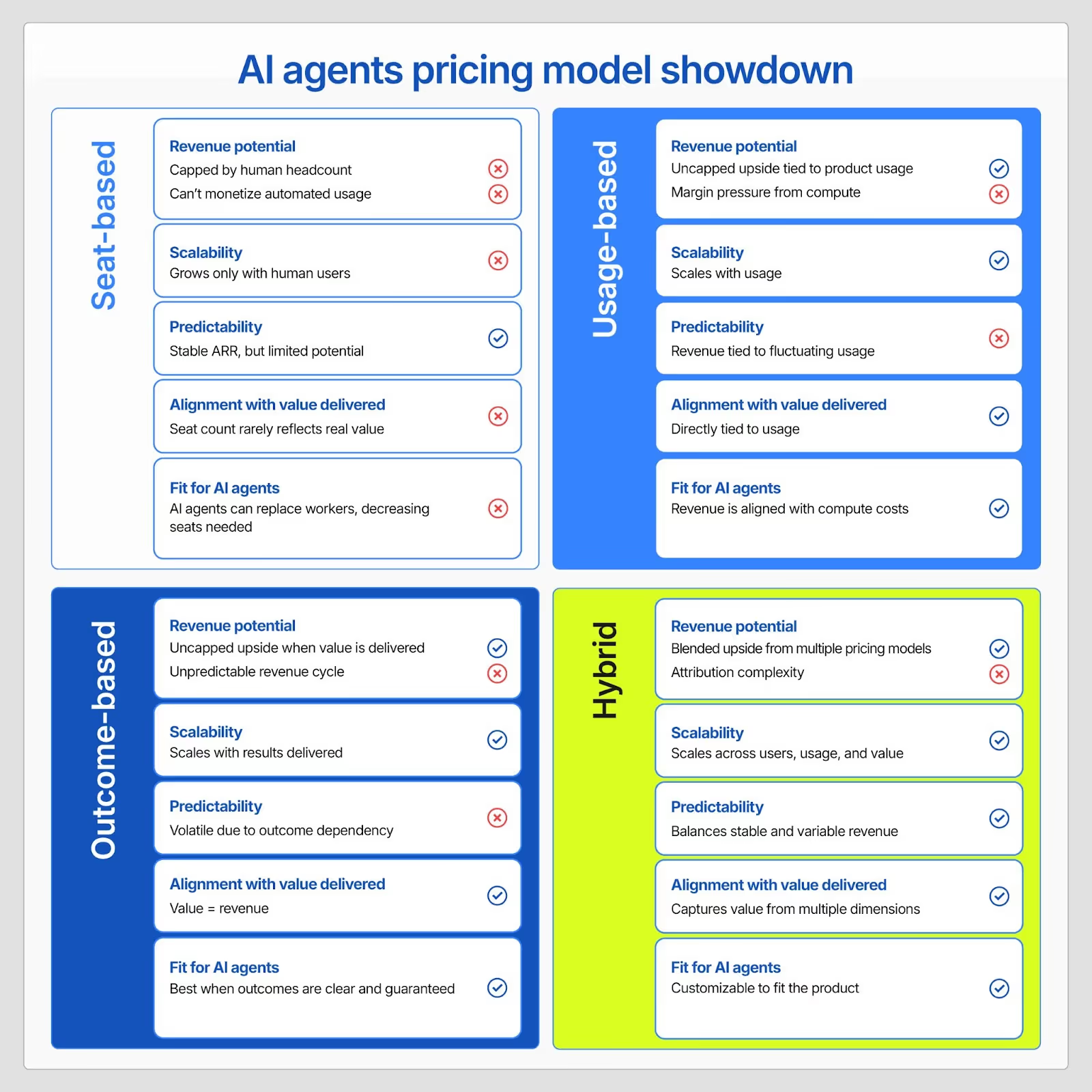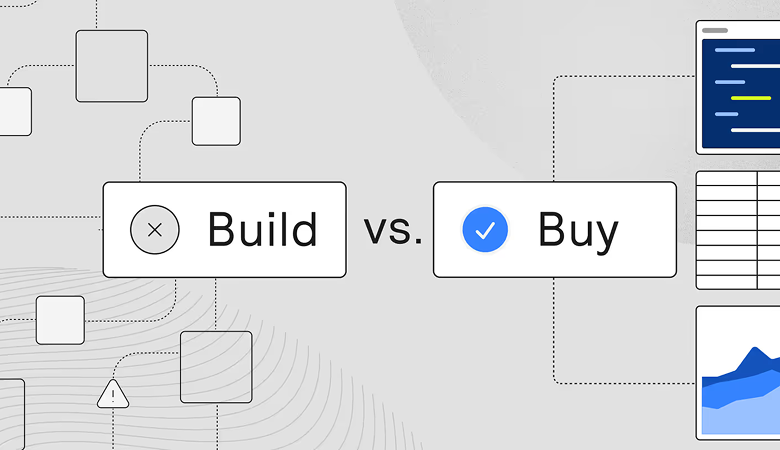AI agents are reshaping how work gets done, from writing code to generating content, but the way companies charge for them hasn’t caught up. While seat-based pricing remains popular and still works for many products, it falls short when it comes to AI agents. That’s because the value of an AI agent isn’t tied to how many people use it — it’s tied to what the agent accomplishes.
If your AI agent pricing is solely based on headcount, you risk leaving revenue on the table and misaligning price with value.
Seat-based pricing was made for people, not machines
Seat-based pricing made sense in SaaS because it mirrored how value was delivered and the economies of SaaS. The more people that use the software, the more value it provides to the company. Plus, SaaS has high fixed costs and near-zero marginal costs. As a result, seat-based pricing offered predictable, scalable revenue.
But AI agents don’t follow that logic. They augment human users or replace them entirely on specific tasks. One AI assistant may coordinate and schedule all meetings for a company but require only one person to set it up and manage it. This means its value scales exponentially while the seat count stays flat.
Here’s what goes wrong when you apply seat-based pricing to AI:
- You cap your revenue. While users are getting more value as they increase their usage, your revenue stays tied to static headcount.
- You undercharge power users. A single seat may drive massive compute costs or output, and your price doesn’t reflect that.
- You misalign price and value. Customers pay the same whether they use the agent once a week or run it nonstop.
This is more than inefficient; it’s risky. Seat-based pricing offers low scalability and poor value alignment for AI products. If your pricing model doesn’t scale with usage and value, your business won’t either.
“In SaaS, if you double your users, you might only slightly increase costs, so profit scales nicely. In AI, doubling usage could nearly double costs, keeping profit flat unless pricing accounts for it.”
— Pricing AI Agents
The alternatives: Pricing models that fit AI agents
If seat-based pricing limits scale, what are better options?
Usage-based, outcome-based, and hybrid pricing models do a better job at aligning how AI delivers value with cost. However, they each come with tradeoffs.

Usage-based pricing
Customers pay based on what they use (e.g., compute time, API calls, tokens, images generated).
- Why it works: Aligns directly with infrastructure cost and customer value. Highly scalable.
- Downsides: Can be hard for buyers to forecast spend and vendors to predict revenue. Requires strong data transparency.
- Use case: APIs, platforms with variable usage patterns, and developer tools.
Outcome-based pricing
Revenue is tied to results (e.g., leads generated, transactions completed, tasks resolved).
- Why it works: Makes value crystal clear. Easy to justify cost when results are tangible.
- Downsides: Complex to attribute outcomes or agree on success metrics.
- Use case: Agents replacing human labor or automating measurable tasks.
Hybrid pricing
Combines two or more pricing models (e.g., a flat subscription with usage-based overages). While seat-based pricing on its own doesn’t cut it, it can still make sense when combined with other structures to create a hybrid model.
- Why it works: Balances revenue predictability with scalability. Easier to budget for.
- Downsides: Operationally complex to implement.
- Use case: Its versatility makes it a good option for nearly any AI agent, but it can be particularly useful for enterprise buyers who want stable contracts.
New pricing models require new infrastructure
AI pricing moves fast. Your billing system should too.
Legacy billing platforms were built for static subscriptions, not the dynamic, data-driven needs of AI products. They struggle to track real-time usage, they can’t support outcome-based pricing, and they aren’t built for rapid iteration or the complexity of hybrid pricing models.
That’s why Orb exists.
Orb was purpose-built to give AI teams full control over their pricing, from forecasting to rollout, while maintaining accurate billing. With Orb, you can:
- Track real-time usage, turning raw events into billable metrics.
- Launch pricing changes instantly, without waiting on engineering or risking billing errors.
- Version plans and manage overages with ease to support new customer tiers or usage thresholds.
- Simulate revenue outcomes before launching, so you know exactly how pricing changes will perform.
Whether you’re optimizing for growth, margin, or product-market fit, Orb gives you the billing infrastructure to move fast and monetize strategically. Your pricing can evolve as quickly as your product, and your billing won’t hold you back.
Evolve your pricing playbook today
If you’re still charging per seat, you’re anchoring your revenue to the wrong metric. AI products deliver value through automation, not headcount. Your pricing model should reflect that.
Orb gives you the tools to break free from legacy constraints and experiment with pricing that actually scales: usage-based, outcome-based, hybrid, or any other type of pricing model that fits with your product.
Book a demo with Orb and experiment with smarter pricing for your AI agents.



